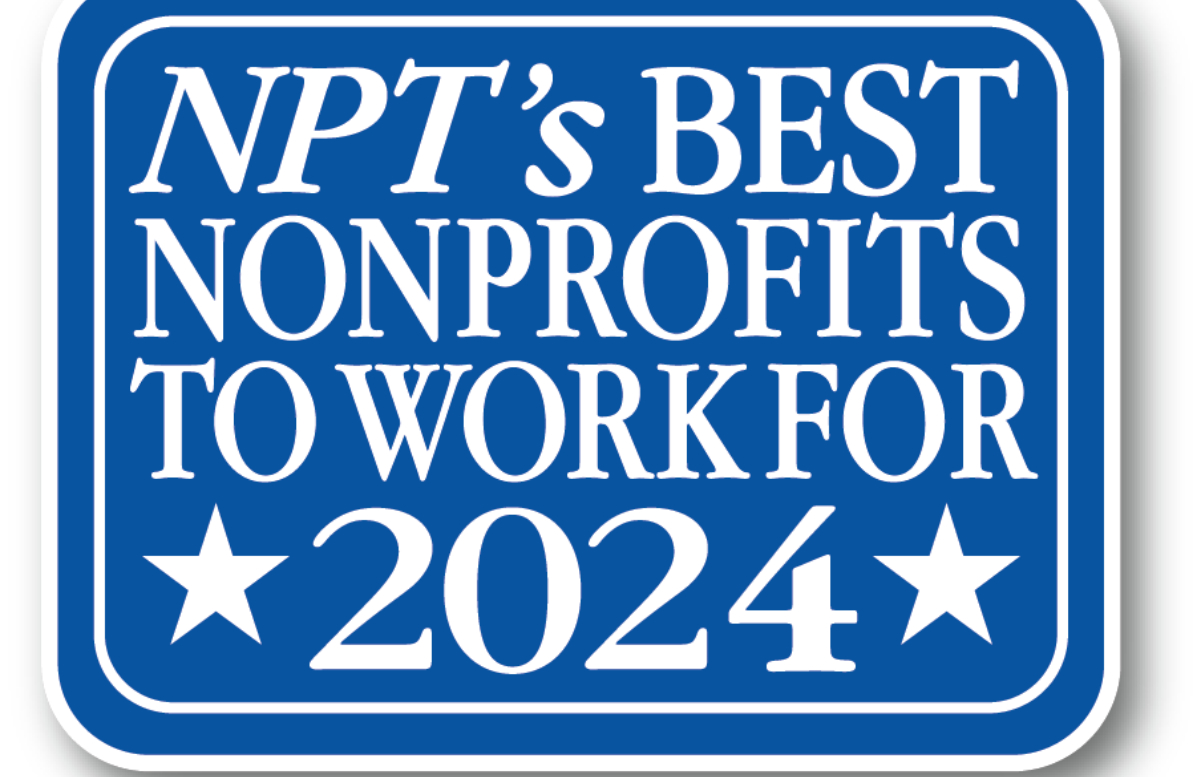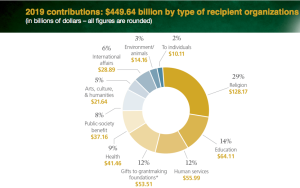Note: See all the Best Nonprofits To Work For stories in the 4/1 digital edition … https://npt.mydigitalpublication.com/publication/?i=818582
*****
There are some surprises in the data from 2023 for this year’s The NonProfit Times’ “Best Nonprofits To Work For.” The top 50 organizations outperformed the also-rans on a variety of metrics, as they have in the 13 years this study has been conducted (not a surprise).
The individual organizations making the two lists (the best nonprofits to work for and the rest) during a given year vary but the metrics track over the years, giving something that looks like longitudinal data, with external pressures such as the economy generating rises and dips in their fortunes that largely pass the smell test.
There is a curiosity when looking at historical data — a period covering the calendar years 2019-2023. Across the board within the 2021 study, which evaluated employee attitudes during 2020, the data revealed high-water marks in employee satisfaction.
That finding is curious because starting in March 2020 the coronavirus disrupted almost every facet of global living. Communities operated under shelter-in-space restrictions. Gatherings large and small were discouraged and in some places banned. Offices were shuttered and work from home setups proliferated. Stress soared. And yet within this environment nonprofit employee satisfaction soared.
Huh?
“We were able to navigate the pandemic, quickly mobilizing our workforce, getting folks set up from home and frequently communicating with them about the state of our business and what their immediate future looked like,” said American Arbitration Association Senior Vice President and Chief People Officer Eric Dill.
The American Arbitration Association (ranked 14th overall in 2024 and second within the Large Employer category of 250 or more employees) appears regularly in the best nonprofits to work for lists. Dill acknowledged that the association had many of its highest rankings in recent years in that 2021 report. That said, differences in percentages of positive responses between 2021 and other years were less pronounced for both his and other organizations ranked in each year’s top 50. Nonprofits not making the best of rankings tended to show greater disparities between 2021 and other years.
Dill attributed that year’s lofty ratings to, among other factors, “the care and attention we exhibited toward [employees’] personal safety and situations; the accommodations we made; the way we responded to employees who contracted the virus; and also, unfortunately, to employees who lost family members.”
That style of approach during the initial months of the coronavirus pandemic caused the average “Overall Engagement” score to top out at 95% among the best nonprofits of 2021 (which covered 2020 results). The measure merges sentiments such as “I am very satisfied with my employer” and “I am willing to give extra effort to help this organization succeed,” among others. This year, the aggregated figure stood at 92% of positive responses.
Among those nonprofits that did not make the top 50 list, 2021’s study of 2020 results saw a high of 87% for these sentiments, although the slip to this year’s level of 81% was more precipitous than it was among the top group.
The strong positive responses seen in 2021’s study held across all subcategories. Within “Leadership” criteria (“I understand the long-term strategy of this organization,” and “The leaders of this organization care about their employees’ well being”), positive responses peaked at 93% in 2021 (90% this year) among the top 50 and 82% in 2021 (76% this year) among the rest.
The “Corporate Culture and Communications” category (“I like the people I work with at this organization,” and “This organization’s corporate communications are frequent enough”), topped out at 92% among the best top 50 nonprofits in 2021’s report on 2020 (88% this year) and 82% among the rest in 2021 (74% this year).
“Role Satisfaction” (“I like the type of work that I do,” “I understand the importance of my role to the success of the organization”) stood at 93% in 2021’s report among the top 50 (90% this year) and 86% among the rest (81% this year).
In the “Pay and Benefits” category, employee positivity in 2020 (as seen in 2021’s numbers) likely reflected relief at continued employment, as well as more liquid cash because limited spending opportunities on luxuries as restaurant dining and travel were curtailed.
Four years ago, 92% of employees at the best nonprofits agreed with a variety of statements about their compensation (“I’m satisfied with the sick leave policy,” and “I’m satisfied with this organization’s benefits package”), as did 81% of employees not at top 50 organizations. This year, 87% of employees at the best nonprofits felt good about their pay and benefits, as did only 73% of those not at top 50 organizations.
The increase in 2020 disposable income contributed to those at the top nonprofits at which to work being willing to say “My pay is fair for the work I perform” in 2021’s analysis (83%) than did in 2024 (76%), while among the also-ran nonprofits agreement with that sentiment dropped from 67% to 61% during the same period. When inflation and the cost of living ramped up after 2020, paychecks did not stretch as far as they would have otherwise in a lower or moderate inflation environment, causing increased dissatisfaction.
People at organizations dedicated to the advancement of nonprofits offered additional perspectives. National Council of Nonprofits Chief Operating Officer Rick Cohen pointed to several external factors. Student loans were paused in mid-March 2020, right around the time employers were offered Employee Retention Credits by the Internal Revenue Service. The federal Paycheck Protection Program (PPP) launched in April 2020.
“You had all that PPP money being spent on the employees,” Cohen said.
There are other reasons why employees viewed 2020 as a watershed year. Organization leaders were forced to make changes employees embraced. “We had seen subtle shifts before the pandemic, with remote work being more possible, with everything in the cloud,” Cohen said. “Then it was turbocharged.”
Organizations began to move past the height of the coronavirus crisis during the years following the 2021 study. Federal aid dried up and private funding to nonprofits began to taper off just as organizations that had invested in taking care of their employees were reallocating financial resources back to their missions.
Cohen’s perspective is underscored by the drop-offs between 2021 and today in several “Work Environment” criteria, which includes sentiments such as “I feel physically safe in my work environment” and “My physical working conditions are good.” In 2021’s analysis, the top 50 nonprofits to work for had an aggregated satisfaction rate of 95%, compared to 91% this year, while the other nonprofits saw their 89% level slip to 85% this year.
Partly because of these factors, employees who had been considering either moving on to the private sector or retiring but who stayed with their organizations out of a sense of loyalty began to leave. “Having lost some employees to the for-profit sector, [nonprofits] are having trouble filling those spots,” Cohen said. As a result, “That burden is even greater on those people who are still there, which even if the salary and benefits were comparable to for-profits, it just feels harder,” Cohen said.
For Dill, the drop in Corporate Culture and Communications scores reflects both an increase in headcount, and the volume of the American Arbitration Association’s activity outpacing leadership’s results reporting. “Last year, we grew our headcount by 11%,” Dill said. “When you add 65 or 70 employees to your workforce and you ask them how you’re doing financially, they’re unsure, because they’ve only been with the company for six or seven months and haven’t seen the financial reports yet.”
None of the recent drop in some employee satisfaction metrics comes as a surprise to Melanie Lockwood Herman, executive director at the Nonprofit Risk Management Center in Leesburg, Virginia, a which helps managers identify and manage impediments to their organizations’ success.
“During the early phases of the pandemic, nonprofit leaders did an extraordinary job prioritizing employee safety, health and wellness,” Herman said. “Over time, leaders have had to refocus on meeting contractual and grant requirements, addressing evolving constituent wants and needs, and operating fiscally sound businesses. To some employees, the prioritization of the bottom-line and fiscal issues may be perceived as minimizing their commitment to employee wellbeing.”
The good news is that some of the softer aspects of employee satisfaction have experienced the smallest drop-offs since 2021’s report. Within that report on 2020 attitudes, the aggregate “Relationship With Supervisor” category (which includes “My supervisor treats me with respect” and “My supervisor handles my personal issues satisfactorily”) stood at 94% for the top nonprofits, not much different from the 93% seen this year. For the rest of the nonprofits, the 90% rating in 2021 slipped to 86% this year.
Another set of criteria, “Training, Development and Resources,” was the only one that had an aggregate ranking slightly higher in 2022 (reflecting 2021 responses) than in 2021. This category, which includes the sentiments “This organization provides the technology, equipment and resources I need to do my job well” and “Technology issues affecting my work are communicated to me in a timely manner” came in at 90% in 2022 for the top nonprofits, slightly up from the 88% seen in 2021. This year’s levels were back to 88%. Among the rest of the nonprofits, 2022’s 81% level was on par with 2021’s 80%, but above this year’s 77%.
“We simplified things in the early days of the pandemic,” Herman said. “We went from being in an office to working remotely, and many organizations went from cutting checks to using an online bill payment tool. Many organizations have kept those simplified processes in place. When people feel their day is spent on mission-related activities, they’re going to be more satisfied in those roles.”
On the downside, Herman noted the post-pandemic period has highlighted a divide among nonprofit workforces. “In many nonprofits, there are roles that cannot be done remotely,” she said. “I worry about the division within nonprofit workforces of individuals who must be on site and those who can work from home. I worry about the designation of certain jobs that can be worked from home forever and others that can never be done remotely exacerbating those perceived divisions and bringing a sense of inequity.”
Leaders at the American Arbitration Association have tried to address this particular issue. Pre-pandemic, 95% of the organization’s staff were fully onsite, according to Dill. During the pandemic, around 90% transitioned to either a remote or hybrid work model. Post-pandemic, around one-third have remained fully remote, while the remainder work on a hybrid basis of two days a week in an office. But there are a few exceptions.
“We have a handful of employees who can’t perform their work remotely, so they’re in the office every day,” Dill said. “We provide them with a 5% pay bump.”













